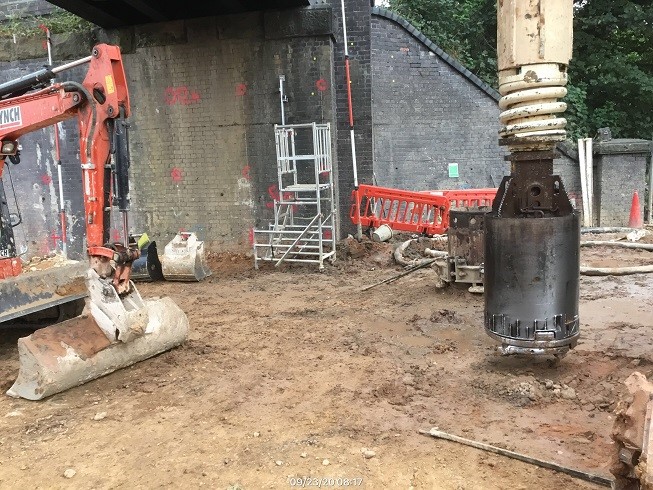Background
Balfour Beatty are contracted by Doncaster Council to replace and extend the existing rail bridge BKS 66 to allow for expansion of the highway underneath to a duel carriageway including footpaths and cycleways
Scope
The main scope for the project comprises replacement of a pre-existing rail bridge spanning the A18 using a combination of piling methods & innovative design. The method of works has been planned to minimise the disruption to the existing rail network by constructing the majority of the new abutments without closing the rail. This involved driving sheet piles adjacent to the north abutment to allow us to excavate and construct the new north abutments foundations located approximately 6m further north than the existing to facilitate 17no 750 diameter 22-25m deep piles constructed using case and auger techniques.
Problem
The existing ground is a mixture of sands onto Sherwood sandstone bedrock as the pile toe 22-25m deep. Groundwater is encountered at circa 9m bgl. The augering technique within casing creates a lot a silt within the pile bore when augering out material. The silt is suspended in the water and settles out at the base which can cause problems achieving the required base hardness test and also pulling out the concrete tremie hose during concreting of the pile. This issue can be overcome by allowing the suspended solids in the water to settle at the pile base over time then cleaning. The issue with this is that the silt is then caught in a bucket and tipped on the ground during cleaning for subsequent removal by attendant excavator /dumper
Solution
To quicken the process and reduce silted pile arisings our piling specialists Keller, in conjunction with Selwood pumps devised a bespoke solution to utilise the concrete tremie hoses to pump water out by manufacturing a bespoke adapter to fit a high head hydraulic pump which can then be lowered to the pile bore base, be turned on to exchange silty water for clean.
Benefits
This allows the silty water to be pumped out and exchanged for clean resulting in less silty water tipped on the ground and instead captured into settlement tanks for disposal and speeds up achieving the required base hardness test to ensure a perfectly constructed pile.
Did you find this article helpful?
Please rate this article

Loading...






